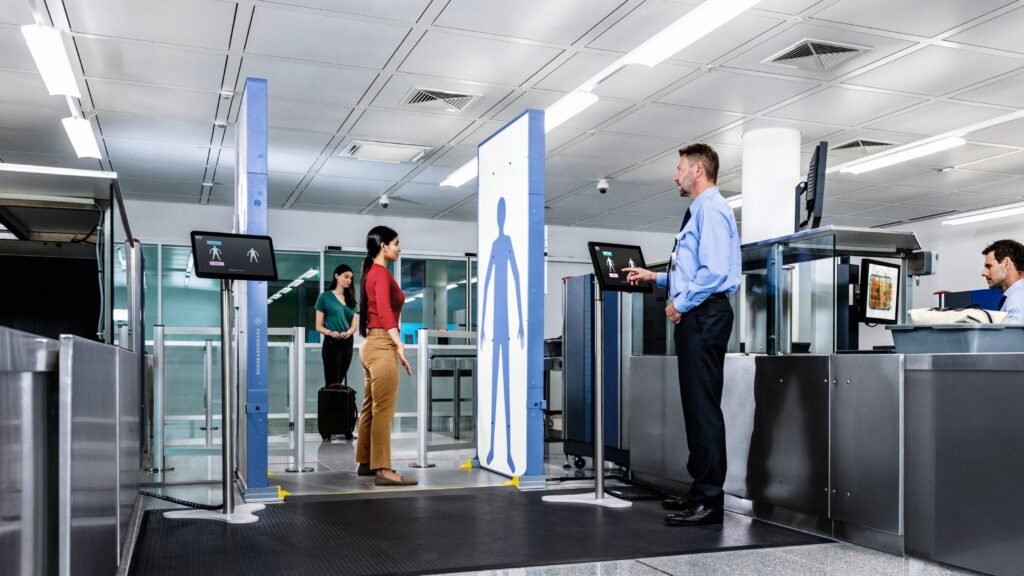The importance of effective airport security systems cannot be overstated in today’s world, where the threat of terrorism and other security challenges looms large. As travel becomes increasingly globalized and passenger volumes rise, the need for innovative solutions to enhance traveler protection is paramount. This article explores the revolutionary technologies and strategies that are reshaping airport security, ensuring a safer and more efficient experience for travelers.
Advanced Screening Technology
One of the most significant advancements in airport security is the development of sophisticated screening technologies. Traditional methods of screening passengers and their belongings are becoming obsolete in the face of emerging threats. Advanced imaging technology (AIT), for instance, uses millimeter-wave technology to create a 3D image of a person without revealing personal details. This non-invasive method allows security personnel to detect prohibited items while ensuring passenger privacy.
Furthermore, computed tomography (CT) scanners are gaining traction in baggage screening. Unlike conventional X-ray machines, CT scanners provide high-resolution 3D images of the contents of luggage, allowing for more accurate threat assessment. These scanners can automatically recognize items that pose a risk, reducing the need for manual inspections and streamlining the screening process. As airports adopt these technologies, the efficiency of security checks improves significantly, reducing wait times and enhancing the overall passenger experience.
Biometric Identification
The integration of biometric identification systems represents another leap forward in airport security. Biometric technologies, such as facial recognition and fingerprint scanning, provide a way to verify the identity of travelers with greater accuracy and speed. With the rise of identity theft and fraud, biometrics offer a solution that is both secure and user-friendly.
Facial recognition systems can be deployed at various checkpoints, including check-in, security screening, and boarding. These systems use algorithms to compare passengers’ faces against their identification documents, ensuring that only authorized individuals gain access to secure areas. Moreover, the use of biometric technology expedites the boarding process, as travelers no longer need to present boarding passes or IDs multiple times. This seamless experience enhances traveler satisfaction while maintaining high security standards.
Internet of Things (IoT) Integration
The Internet of Things (IoT) is transforming airport operations, including security measures. By connecting various devices and systems, IoT enables real-time data sharing and communication among different stakeholders. For instance, smart cameras equipped with AI capabilities can detect unusual behaviors or unauthorized access, alerting security personnel instantly.
Additionally, IoT devices can monitor baggage handling and tracking, ensuring that each piece of luggage is accounted for throughout the travel process. This technology not only enhances security but also reduces the likelihood of lost or mishandled baggage, a common concern for travelers. The integration of IoT in airport security creates a more responsive and adaptive security environment, ultimately leading to improved traveler protection.
Data Analytics and Machine Learning
In the age of big data, leveraging data analytics and machine learning algorithms is becoming essential for airport security. These technologies can analyze vast amounts of data collected from various sources, including passenger profiles, travel histories, and security incidents. By identifying patterns and anomalies, security agencies can proactively address potential threats before they escalate.
For example, predictive analytics can be used to assess the likelihood of certain behaviors or activities occurring at airports, allowing security personnel to allocate resources effectively. Machine learning models can also be trained to recognize suspicious patterns in passenger behavior, helping security staff to focus on individuals who may require further scrutiny. This data-driven approach enhances the overall efficiency of airport security systems, creating a safer environment for travelers.
Enhanced Training and Human Factors
While technology plays a crucial role in improving airport security, the human element remains vital. Enhanced training programs for security personnel are essential to ensure that they can effectively utilize new technologies and respond to evolving threats. Continuous education and simulation exercises help security staff stay sharp and prepared for any situation.
Moreover, the implementation of behavioral detection techniques allows trained personnel to identify potential threats based on non-verbal cues and psychological profiles. These techniques complement technological measures, creating a holistic approach to security. By blending advanced technology with human intuition, airports can significantly enhance their security protocols and ensure passenger safety.
Collaborative Security Measures
International collaboration is increasingly important in the realm of airport security. The sharing of information and best practices among countries can help strengthen global security measures. Joint exercises and training programs can enhance the capabilities of security personnel and create a unified response to potential threats.
Additionally, partnerships between government agencies, airport authorities, and private security firms are vital for developing comprehensive security strategies. By pooling resources and expertise, these stakeholders can implement cutting-edge technologies and practices that address the unique challenges faced by each airport.
Future Trends in Airport Security
As technology continues to advance, airport security will likely evolve in exciting new directions. Innovations such as artificial intelligence, blockchain technology, and drones hold significant promise for enhancing security measures. AI-powered systems can offer real-time threat analysis and response, while blockchain technology can secure passenger data and streamline identity verification processes.
Moreover, drones may be employed for surveillance and perimeter security, providing an additional layer of protection. As these technologies mature, the airport security landscape will become increasingly robust and responsive, ensuring that traveler safety remains a top priority.
In summary, the future of airport security is characterized by innovation, collaboration, and a commitment to enhancing traveler protection. By embracing next-generation technologies and strategies, airports can create a safer, more efficient travel experience for millions of passengers worldwide. As we continue to confront evolving threats, the importance of adapting and improving security measures will remain a critical component of modern aviation.
Subscribe to Updates
Subscribe to Updates
Get the latest creative news from FooBar about art, design and business.



